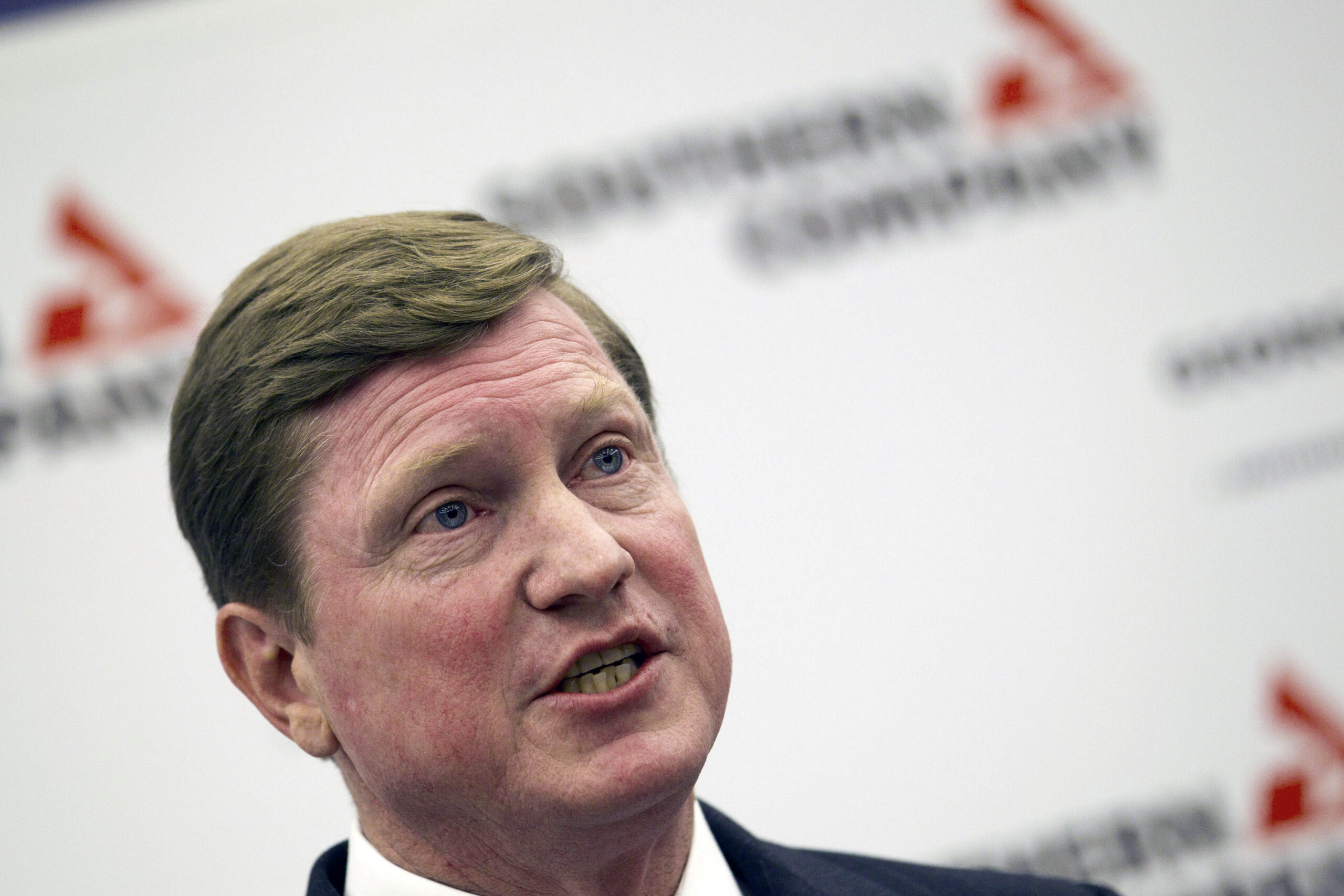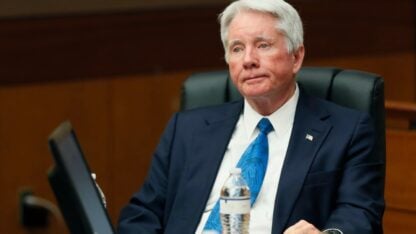Southern Company’s Tom Fanning Talks Carbon Emission Reduction, Plant Vogtle At Annual Meeting

Southern Company Chairman, President and C.E.O. Thomas Fanning, pictured in 2012, spoke about the business’s future recently at its annual stockholders’ meeting.
John Bazemore / Associated Press file
Southern Company is the largest producer of electricity in the Southeast, and the parent company of Georgia Power.
At its annual stockholders’ meeting Tom Fanning, its president, CEO and chairman spoke about his confidence in the business’s future and answered nearly three hours of questions from shareholders.
Fanning also highlighted the company’s different subsidiaries’ responses to the hurricanes along the Gulf Coast this past year, saying that what was possible to restore, was restored in three days and rebuild the rest in 13 days.
He called Southern Company the best performer in its industry this year.
“Even over 20 years, we’ve been killing it,” he said, referring to Southern Company’s long-term outperformance of the Philadelphia Utility Sector Index and the S&P 500. Fanning attributed some of that success to “our performance on Plant Vogtle.”
Vogtle is the nuclear power plan Georgia Power is expanding in Waynesboro. “It’s the last project standing building new nuclear in America in a generation of Americans,” Fanning reminded the audience.
It’s important to note that unlike a traditional company, Georgia Power, as a regulated utility, has an allowed profit margin set by its regulator, the Public Service Commission.
Therefore, the company can earn more profit when it spends more on big capital projects like Vogtle, because it is able to collect more revenue to cover those costs, thereby expanding its profit number.
Despite many negative headlines related to Vogtle in past years, including more than doubling over its original budget, a surprise extra billion dollars in cost overruns last summer, and delays (the project was supposed to be done by 2017), Fanning touted some more recent successes.
That includes an additional federal loan guarantee publicized in March, which upped the federal government’s commitment to $12 billion. It also includes a recent rebaselining evaluation that reaffirmed the company’s existing schedule and budget.
Many questions from shareholders centered on Southern Company’s goal to move to “low- to- no” carbon emissions by 2050, and how exactly it would accomplish that.
Though Georgia Power, Southern’s largest utility did not prioritize that goal in its recent integrated resource planning process, Fanning confirmed that it is a priority. But one, he said, that cannot be accomplished with existing technology.
Hear more in WABE’s interview full interview with Fanning.








